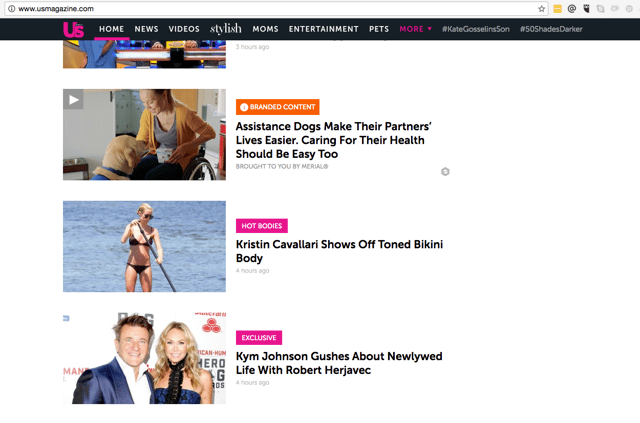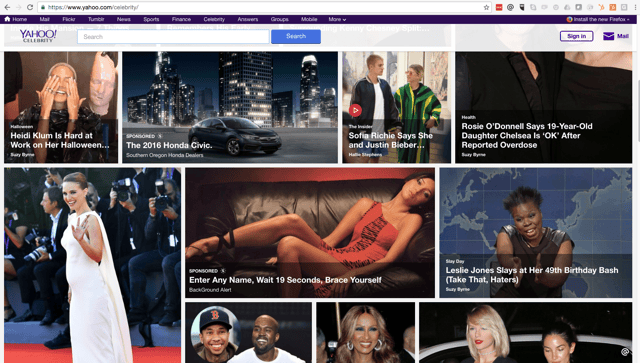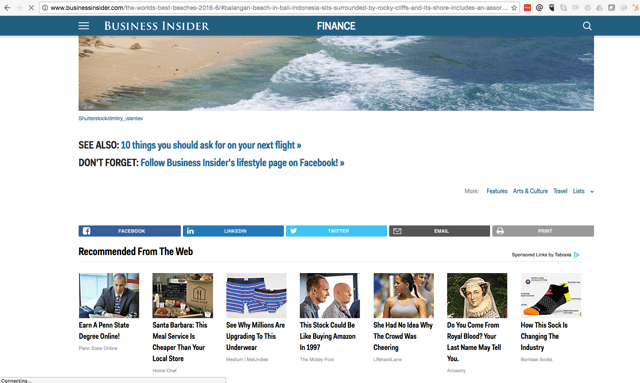Native Ad or Editorial Content?
In the media buying space, it can be challenging to find symmetry between profitability and a genuine user experience. Adding more display ads may show a return on investment for a while, but not without heavy cost—the poor user experience will ultimately affect the value of your brand negatively. If you’ve been looking for a different way to more effectively distribute your content and find new customers—without disrupting the user’s experience—Native Advertising is the solution.
The value-add of Native Advertising is indispensable to a brand; it exposes your audience to engaging content that not only informs and entertains, but promotes positive brand reinforcement. Native advertising works similarly to the way any piece of online content should—it provides users with information that seamlessly integrates into the surrounding content.
"It has been found that the less an advertisement looks like an advertisement, and the more it looks like an editorial, the more readers STOP, LOOK, AND READ."
-David Ogilvy, the legendary advertising executive, widely known as the “Father of Advertising”
Of course, making sure the ad matches the look and style of the page it’s displayed on is only part of the equation. Native ads come in several ad formats, so selecting the right one for your brand’s needs and target audiences is the first step in a successful ad campaign.
Native Ad Units You Should Know
Storygize, a cutting-edge native advertising platform with a managed service offering, buys native ad space programmatically. The proprietary technology automatically and continuously optimizes between (mostly) three core native ad units to help brands reach target audiences most effectively and efficiently:
- In-Feed
- Image Tile
- Recommended Content
Each has a specific way of targeting the right audience throughout the buyer’s journey while aligning with your brand’s objectives. Below, we explain the differences between the three:
In-Feed Ads
In-feed ads are formatted to seamlessly integrate into the surrounding content without disrupting the user experience. Such ads are popular on sites like Facebook and Twitter, where the ads appear in users’ news feeds. In-feed ads are typically labeled as “Sponsored,” “Promoted,” or “Branded Content,” and can link to another piece of content on the publisher’s site or to an external landing page. These are the most common form of native ads, as they don’t disrupt the natural flow of reading.

Example of In-Feed Native Ad on Us Weekly
Image Tiles
Image tiles are similar to traditional banner ads, but appear in and around related information, blending in with their environment. As with in-feed ads, they match their surroundings, but are often found on sites without much editorial content. These promoted images are designed to look like the products or stories offered on the site, but are always labeled as “Sponsored”.
 Example of Image Tile Ad on Yahoo
Example of Image Tile Ad on Yahoo
Recommended Content
Recommended content is another form of native advertising, generally appearing below an article that has a similar theme, sometimes within a widget. These ads are placed in paid locations with links directing users away from the main content, and are designed to appear based on the context of what the consumer is currently reading. They will often be noted as “Promoted Stories”, “Recommended From The Web”, or “You Might Also Like".
 Example of Recommended Content on Business Insider
Example of Recommended Content on Business Insider
Conclusion
Native Advertising is a great way to extend the lifecycle of content by educating and informing your target audience in new ways. Regardless of its form—a sponsored story on Facebook or an article on Buzzfeed—or ad unit format, the content you provide must be relevant to be successful, so it’s important to know the differences between the common types of native ads.
Learn how Storygize creates custom strategies to help brands find the right audience at the right time and convert them to customers and fans.
***
This post is about: native advertising, native ads, native ad platforms, native ad mistakes, native advertising best practices, programmatic ads, programmatic native advertising, native ad metrics, display ads, banner ads, performance marketing, and content marketing.
To learn how to make programmatic native advertising work for you, check out Storygize's comprehesive eBook, Go Native: Effective Content Promotion and Customer Engagement.
Feedback welcome! Feel free to comment below.

